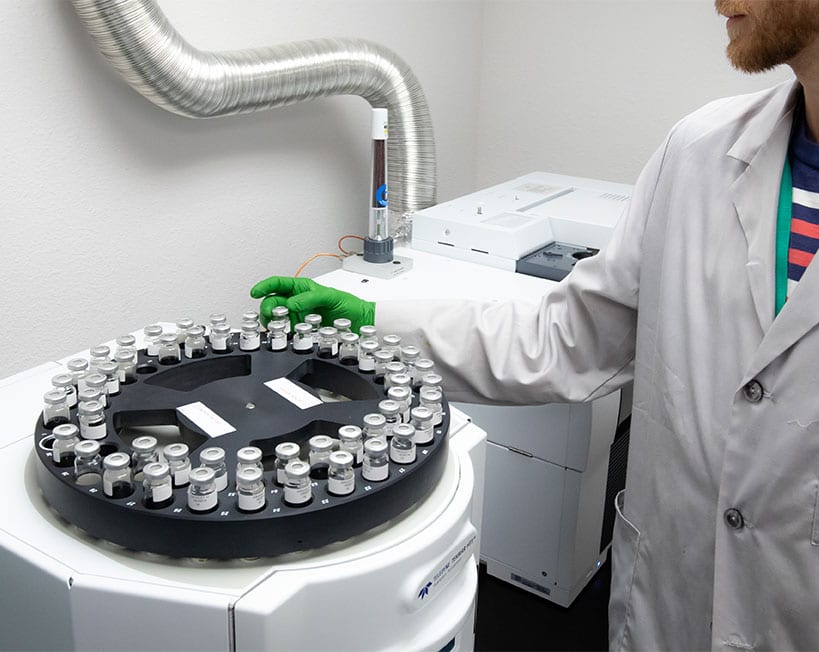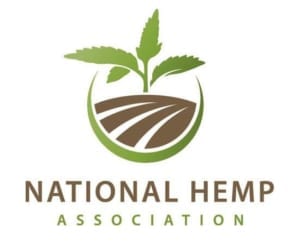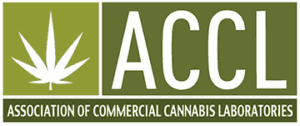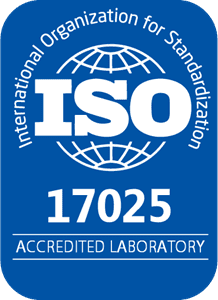Cannabis And Hemp Residual Solvents Testing
What Are Residual Solvents?
Residual solvents are organic volatile chemicals that are used in the manufacturing or extraction process.
In cannabis, they are used to extract cannabinoids or terpenes from the plant material. These solvents are often not completely removed by practical manufacturing or extraction processes. Therefore, testing for these chemicals is required in many industries, including cannabis.

The Importance of Residual Solvent Testing in Cannabis Products
During the production of cannabis extracts and concentrates, organic solvents, such as butane, ethanol, CO2 and propane, are used to extract and isolate active ingredients, such as THC, from the plant material.
The extraction process is typically a solvent intensive process and requires skill to remove solvents. Manufactures go to great lengths to heat/vacuum purge out remaining solvents. Residual solvent testing identifies the presence of these harmful solvents, impurities and other trace residues. Residual solvent testing is crucial in order to assess the efficiency of the manufacturing process and the quality of the product for safe consumption.
How residual solvent testing is conducted at Green Leaf Lab
Green Leaf Lab analyzes Residual Solvents utilizing a Headspace GC/MS (Gas Chromatography/Mass Spectroscopy) also known as static headspace analysis.
Samples are sealed in an airtight vial and heated at a specified temperature until volatilized. This gas is then injected into the GC, which separates the various compounds based on size and polarity. Once separated, the compounds enter the mass selective detector to be identified and quantified.
Residual Solvent Analyte
Analyte list with Chemical Abstract Services Registry Number| SOLVENT ANALYTE | CAS No. |
|---|---|
| 1,2-Dichloroethane* | 107-06-2 |
| 1,4-Dioxaneᵃ | 123-91-1 |
| 2-Butanolᵃ | 78-92-2 |
| 2-Ethoxyethanolᵃ | 110-80-5 |
| 2-Propanol (IPA) | 67-63-0 |
| Acetone | 67-64-1 |
| Acetonitrile | 75-05-8 |
| Benzene | 71-43-2 |
| Butanes | 106-97-8 |
| Chloroform* | 67-66-3 |
| Cumeneᵃ | 98-82-8 |
| Cyclohexaneᵃ | 110-82-7 |
| Dichloromethaneᵃ | 75-09-2 |
| Ethanol* | 64-17-5 |
| Ethyl acetate | 141-78-6 |
| Ethylene glycolᵃ | 107-21-1 |
| Ethylene oxide | 75-21-8 |
| Ethyl ether | 60-29-7 |
| Heptane | 142-82-5 |
| Hexanes | 110-54-3 |
| Isopropyl acetateᵃ | 108-21-4 |
| Methanol | 67-56-1 |
| Methylene chloride* | 62-73-7 |
| Pentanes | 109-66-0 |
| Propane | 74-98-6 |
| Tetrahydrofuranᵃ | 109-99-9 |
| Toluene | 108-88-3 |
| Trichloroethylene | 79-01-6 |
| Total Xylenes | Total xylenes are 1,2-dimethylbenzene 95-47-6, 1,3-dimethylbenzene 108-38-3, and 1,4-dimethylbenzene 106-42-3 |

TERPENES, PLEASE
Understand the fingerprint of cannabis and the terpenes consumers love most.

READY FOR TESTING?
Whether you are in Oregon or California, we’re here for you.

WE LOVE SCIENCE!
Cannabis science is innovative and complex. We get it. So should you.









